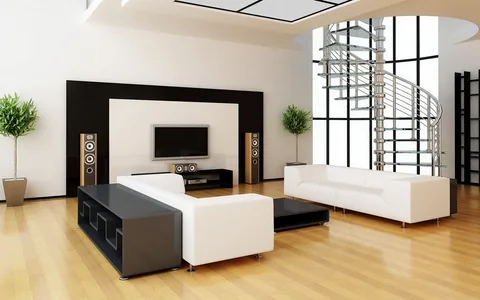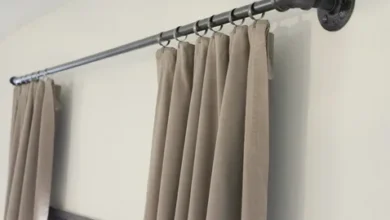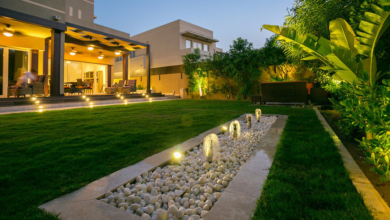Interesting Ideas for enhancing beauty of Incorporating Vintage Elements in Interior Design in Modern Era

In the world of interior design, the allure of vintage elements remains timeless. The integration of pieces from bygone eras not only brings a sense of nostalgia but also adds character, history, and a unique charm to contemporary spaces. This article delves into the art of incorporating vintage elements in design, exploring the various facets of this style, from selecting authentic pieces to creating cohesive, harmonious interiors that seamlessly blend the old with the new.
Defining Vintage Design: A Journey Through Time
Vintage interior designing encompasses styles and artifacts from past decades, typically ranging from the 1920s to the 1980s. It is characterized by its historical appeal, quality craftsmanship, and the ability to evoke memories of a bygone era. The charm of vintage lies in its authenticity, telling stories of different times and design movements.
The Allure of Authenticity: Sourcing Genuine Vintage Pieces
Incorporating vintage elements begins with the hunt for authentic pieces. Antique stores, flea markets, estate sales, and online platforms are treasure troves for discovering unique items with a rich history. Whether it’s a mid-century modern chair, an art deco mirror, or a retro lighting fixture, the authenticity of vintage pieces contributes to the overall character of a space. When planning an apartment renovation in Dubai, these vintage finds can add a distinctive charm and timeless elegance to your home.
Mixing Eras: Blending Vintage with Contemporary Design
A successful vintage design is not about recreating a period space but rather about blending the old with the new. Mixing eras allows for a dynamic and eclectic aesthetic that avoids a dated or overly thematic look. For example, pairing a sleek modern sofa with a vintage coffee table or integrating contemporary art into a room with retro furnishings creates a harmonious balance. See this: https://youtube.com/shorts/ir1w611k6ik
Furniture with History: Embracing Time-Tested Craftsmanship
Vintage furniture often boasts craftsmanship that stands the test of time. Solid wood construction, intricate detailing, and unique design elements set vintage pieces apart. Incorporating such furniture into contemporary spaces not only adds character but also brings a touch of enduring quality that is often missing in mass-produced, modern furnishings.
Rescued and Restored: The Art of Upcycling Vintage Finds
Sustainability meets style in the realm of vintage design through the art of upcycling. Repurposing and restoring vintage pieces not only breathe new life into them but also contribute to a more sustainable approach to interior design. Whether it’s refinishing an old dresser, reupholstering a vintage chair, or transforming salvaged materials into a new creation, upcycling adds a personal touch to vintage elements.
Color Palette of Yesteryear: Infusing Retro Hues into Design
Vintage design often embraces a distinct color palette reflective of specific eras. Earthy tones from the 1970s, pastel hues from the 1950s, or bold contrasts from the art deco era all contribute to the overall vintage vibe. Infusing retro colors into a contemporary space can be achieved through furnishings, accessories, or even accent walls, creating a cohesive and nostalgic atmosphere.
Curated Collections: Showcasing Sentimental Objects
Vintage design provides an opportunity to showcase curated collections of sentimental objects. Whether it’s a display of vintage cameras, a wall adorned with antique mirrors, or a collection of retro vinyl records, these curated elements become focal points that tell personal stories and add a layer of depth to the overall design.
Statement Lighting: Capturing the Elegance of Eras Past
Lighting plays a pivotal role in vintage design, offering a chance to capture the elegance of eras past. Chandeliers, pendant lights, and floor lamps from mid-century modern or art deco periods can serve as striking focal points. Incorporating vintage lighting fixtures not only adds functional illumination but also introduces a touch of glamour and sophistication. Read more: https://emagazine24.com/
Textiles and Patterns: Nodding to Nostalgic Trends
Vintage textiles and patterns evoke a sense of nostalgia, and incorporating them into design can transform a space. Think floral prints from the 1960s, geometric patterns from the art deco era, or the iconic stripes of the 1970s. Vintage-inspired textiles, whether used in upholstery, drapery, or throw pillows, infuse a room with a timeless sense of style.
Open Shelving and Display: Celebrating Quirky Vintage Finds
Open shelving and display areas provide a canvas for celebrating quirky vintage finds. From retro kitchenware to antique books, creating curated display spaces allows homeowners to showcase their unique vintage collections while adding a touch of personality to the overall design.


One Comment